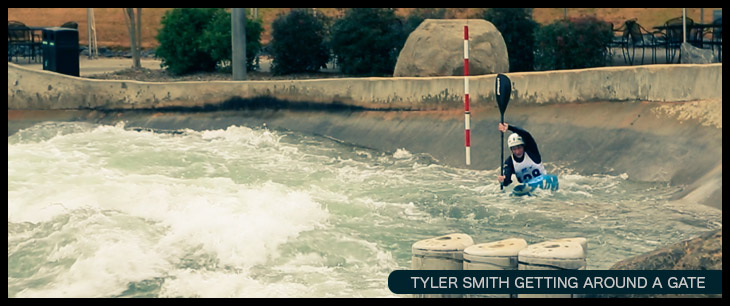Five Things that Make Slalom Kayaking Unique
Today was my first slalom race! If you’ve never seen slalom kayaking in action, I put this short together for you to watch first.
I’m relatively new to kayaking (this is only my third year), and it really is one of the most fun sports I’ve tried. I’ve also noticed that I am one of the older slalom paddlers on the water. Camren (my ex-rugby playing kayaking partner) and I talk a lot about what makes this sport different from other sports we’ve played. To elaborate a bit on our conversations, here are the top 5 things we find unique about slalom kayaking.
1. You versus the Gates
First, the “team” aspect is kinda relative in this sport. It really is just about you and the gates. In that sense, it’s a bit like swimming or the time-trial section of a bike race. The time keeper signals that it’s your turn, and it’s your goal to get through the course as quickly as possible. Touch a gate, and you get two seconds added to your time. Miss a gate, and you get 50 seconds. And you have another racer starting a minute behind you, so you’d better not be too slow!

2. Unpredictability
The main problem with this whole you-versus-the-clock aspect of the sport is that each race is ever so slightly different. One of the physics videos we’re doing this year is about chaos theory. Now that I’ve kayaked, all I can see is its unpredictability. The water is ever-changing, so you need a lot of tricks up your sleeve to be prepared for what the water throws at you while you’re trying to make the gates.

3. The Fear Factor
I don’t want anyone thinking that racing is scary. It’s not that scary. By the time you’re at the highest training level, you’re pretty comfortable around white water. However, it is very scary when you start. If you have problems with claustrophobia or fears of drowning, you’re going to have a tricky time getting into this sport. Imagine squeezing into a relatively small opening and essentially locking your legs in and securing a skirt around the boat to make sure you don’t fall out if you go upside down. Also know that the river has rocks in it, which fly by your head, adding to the urgency to get back up. Now realize that if you do go upside down and for some reason lose your paddle or can’t get over, the only way out is a little release cord on that kayak, which you better find in a hurry.
Essentially, there is no easing into slalom kayaking in whitewater rapids. You just do it. To put this in perspective, I’m a skydiver. I like to jump out of planes. The first few jumps are scary because you can’t ease into that first jump. You have to commit and go for it. If you’re tentative, you risk really messing it up, which hurts.
4. The Fans
I’ve never played sports that attract large crowds. I’ve been a swimmer, cyclist, soccer player, wrestler, and triathlete for much of my competitive career, and none of those sports attract much of a crowd. Slalom kayaking here in the States isn’t much different. In fact, I think I had more people at my 7th grade football games than I’ll ever have at one of these. I’m ok with that, though. (I’m already married, so I don’t have to worry about picking up the ladies!)
5. Your Gear
Kayaking isn’t as gear-intensive as say race car driving, but it ranks somewhere in there with triathlons or cycling. Most of your skill comes from knowing your stuff, but having a good boat is a significant factor. I have a really old boat with lots of holes. It’s not ideal.



































































































Nice video and sport!
Have a nice day